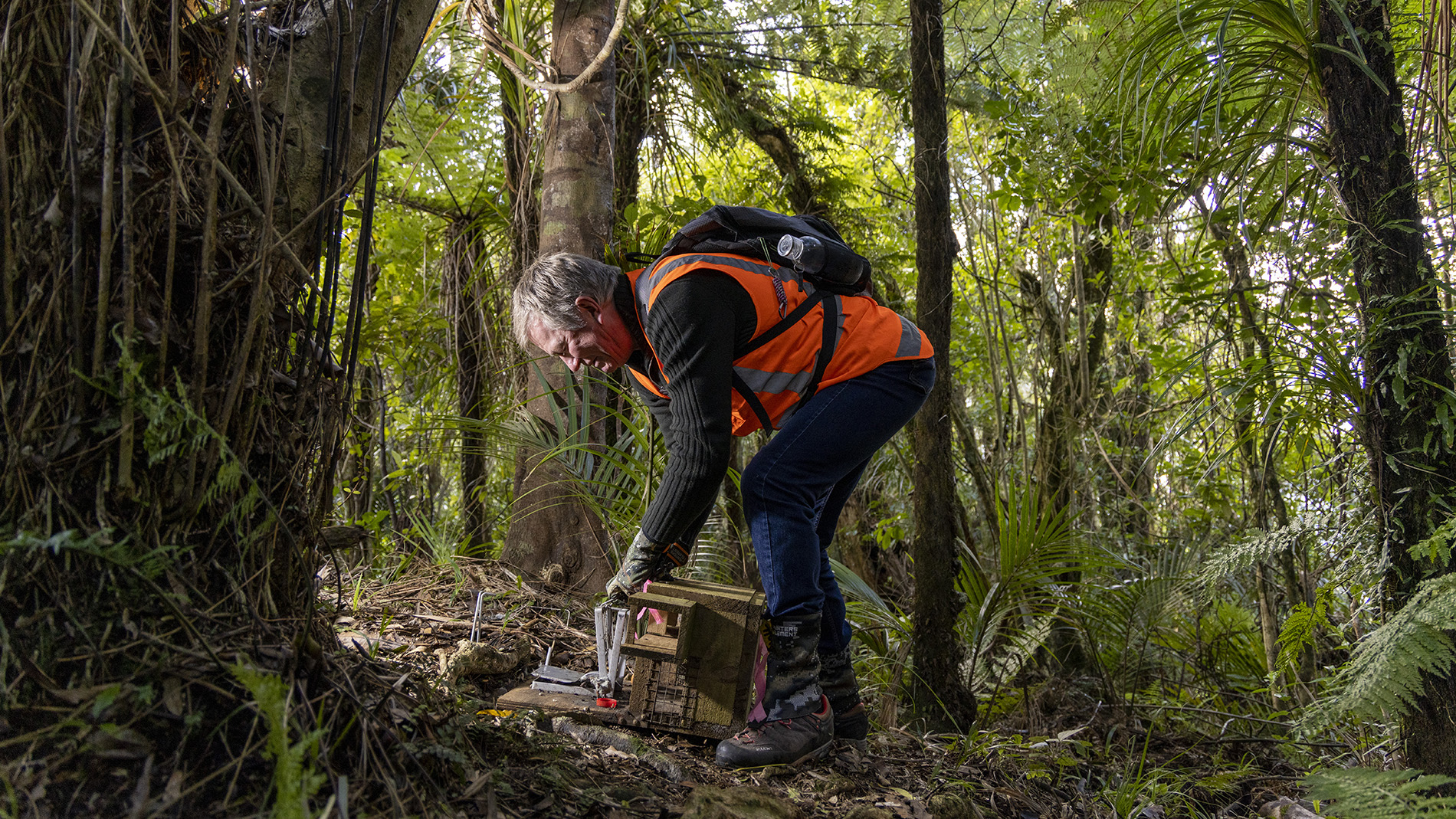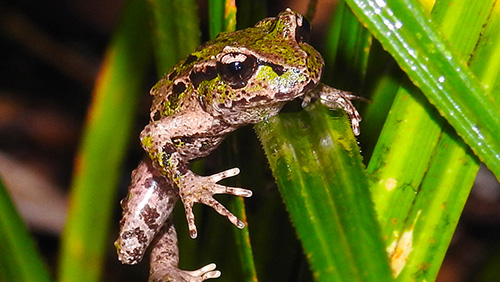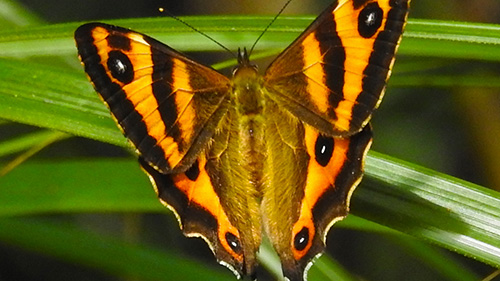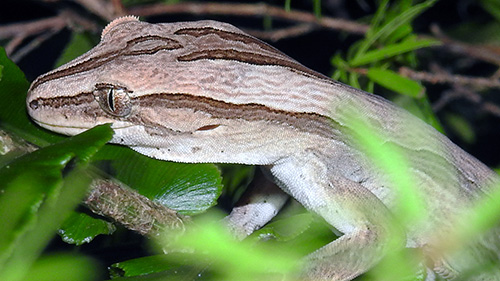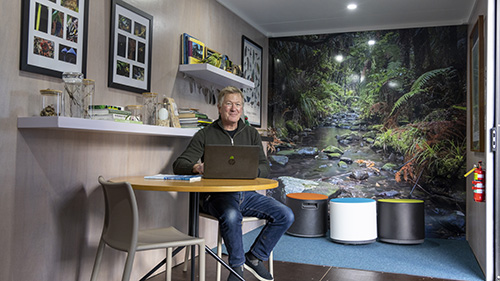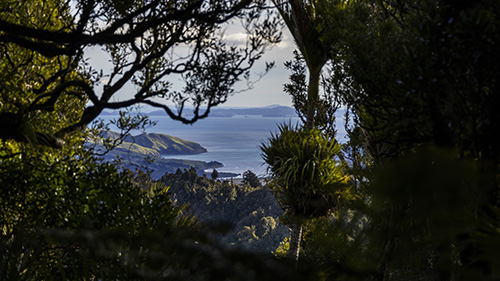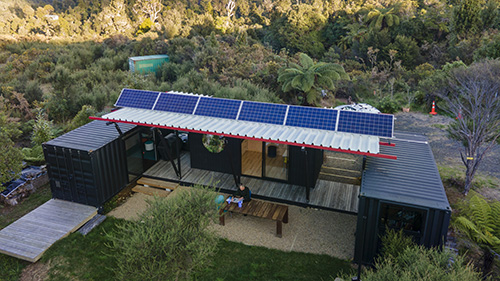“All three are extremely vulnerable. Mahakirau is the only site where Helm’s butterflies are observed through their lifecycle on a regular basis. If we don’t focus on this population, it’s possibly the next butterfly to become extinct in the world. How can you watch that happen?”
– Tim Hooson, Biodiversity Threats Manager
What do you do when you have three endemic, endangered species on your property, and that property is one of the few remaining places where these species may be found?
You protect them of course!
Waikato Regional Council is helping landowners of Mahakirau Forest Estate, an internationally significant natural area of 600 hectares on the 309 Road between Coromandel and Whitianga, save a “trilogy of treasured taonga”.
The community was granted $201,000 from the council’s Natural Heritage Fund over four years towards predator control, education and to contribute to site specific biodiversity plans to protect populations of Archey’s frog, northern striped gecko and Helm’s butterfly.
Mahakirau Forest Estate Biodiversity Threats Manager Tim Hooson, who lives in the estate, says he and the other landowners feel a “very, very big obligation” to sustain its populations of the trio.
Archey’s frog is ranked number one amphibian on the Zoological Society of London’s global EDGE (Evolutionarily Distinct and Globally Endangered) list; the northern striped gecko is found only in the Coromandel Peninsula and mostly recorded within Mahakirau Forest; and the Helm’s butterfly is said to be at risk of being the next global butterfly extinction.
“Yes, it is private land, but we have such unique biodiversity here that needs protecting and needs investment,” says Tim.
“All three are extremely vulnerable. Mahakirau is the only site where Helm’s butterflies are observed through their lifecycle on a regular basis. If we don’t focus on this population, it’s possibly the next butterfly to become extinct in the world. How can you watch that happen?”
Tim says he believes the reason these species exist within the estate is because the landowners have established a safe environment.
Eighteen neighbouring landowners set up an incorporated society in 2001 to not only manage a shared private access road but also to undertake the conservation of the forest, much of which is protected by QEII National Trust covenants.
Tim picked up the role of setting up a pest management programme and trapping was started along the side of the road.
“We were a bit naïve then. We thought we could put in a few traps and that would do. But about three to four years down the track we realised we were on a real hiding if we didn’t step up the pest control programme.”
The predator control programme evolved over the years, and $150,000 of Natural Heritage funding from the regional council in 2017 has helped the estate achieve its aim to reduce rat levels to below 5 per cent.
There are now more than 2500 traps across the estate, targeting 11 predator species, including mustelids, possums and rats.
Tim says it’s come to a point where more site-specific knowledge of the endangered species is required.
“It’s felt like quite a burden because we feel we have the responsibility to not stop.”
The funding will allow the community to work with others to advance the understanding of the ecology, habitat and predators of the three species for the development of site-specific biodiversity plans for each.
“We’ll be running advocacy and educational programmes for other conservation groups, as well, because we suspect there are populations out there that haven’t been found yet.”
The funding will also help cover the cost of maintaining the predator control programme in place, with a particular focus on rodents, cats, wasps and pigs, the main species believed to negatively impact Archey’s frog, northern striped gecko and Helm’s butterfly.
“We now arguably have one of the most intensive predator control programmes on the peninsula, if not in the country, thanks to previous funding from the council, and this latest funding will help us really understand how to enhance our protection of these unique treasures.”
To quantify the value of its control programme, the estate regularly surveys its native inhabitants.
With Auckland Zoo, it has measured, weighed, photographed and named over 100 individual geckos, while counts of Archey’s frogs have contributed in a small way towards their recent re-classification to nationally vulnerable, Tim says.
The trilogy attracts a lot of other national and even international researchers to the sanctuary, so the community funded and built an education hub onsite to host them. The hub will be used to host school aged children and deliver the advocacy and education programmes.
“We live in the conservation area – that is unique. People can come here to share the biodiversity of this amazing environment and help build the knowledge and passion for these species to become abundant.
“We feel the last 20 years have been about us paying it forward so Mahakirau Forest can become a wellspring for these unique and beautiful creatures in the future.”
About the Natural Heritage Fund
The purpose of the Natural Heritage Fund is to help implement the council’s commitment to preserving the natural heritage of the region – native plants and animals, threatened ecosystems, outstanding landscapes and the natural character of waterways and the coast.
Natural heritage projects are designed to protect and enhance the ecological assets for the people of the region.
The Natural Heritage Fund has been in place since 2005 and is derived from the Natural Heritage Targeted Rate of $5.80 per property.



